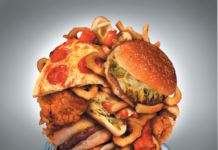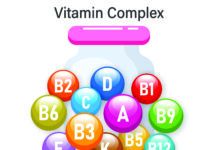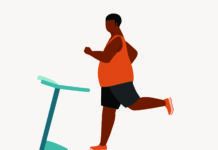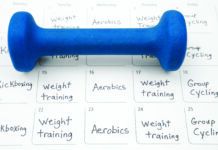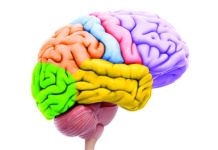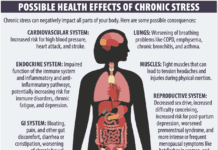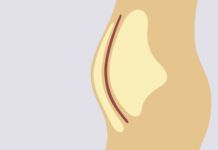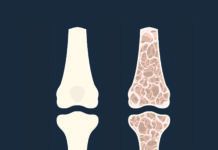In 2023, we provided the latest evidence-based information on a wide variety of health and nutrition topics—including heart health issues, product labeling, physical activity, and supplements. Have you been paying attention?
Jot down your answers, check them against the answer key on page 7, then look at the box on this page to see what your score says about your nutrition knowledge. You’ve got this!
1. True or False?
On a Nutrition Facts label, the “Serving Size” is designed to align with recommended portion sizes.
2. In addition to taking statin medication as necessary, the best way to improve your LDL cholesterol level is to:
a. Consume a healthy dietary pattern
b. Increase your physical activity level
c. Achieve or maintain a healthy body weight
d. All of the above
3. True or False?
Obesity is a result of a lack of willpower.
4. Strength training (weightbearing activity) helps build muscle strength and preserve muscle mass and bone density. Examples include:
a. Lifting weights
b. Brisk walking
c. Doing pushups and wall squats
d. A and C
5. Which supplements have been demonstrated to prevent or slow cognitive decline?
a. Ginko biloba
b. Omega-3 fatty acids
c. Green tea powder
d. None of the above
6. Which of the following increases stroke risk?
a. High blood pressure
b. High blood glucose
c. High LDL cholesterol
d. All of the above
7. What kind of studies can prove that a particular food or nutrient impacts human health (cause and effect)?
a. Animal studies
b. Randomized controlled trials that compare an intervention group to a control group
c. Studies conducted in a lab
d. Observational studies that look at large numbers of people over time
8. Not getting enough good quality sleep has been associated with which of the following?
a. Increased risk for heart attack
b. Higher risk of cognitive decline
c. Weight gain
d. All of the above
9. Why is high blood pressure known as “the silent killer?”
a. It usually has no symptoms
b. It can affect the vocal chords, so some people with hypertension cannot speak
c. It is difficult to diagnose
d. A and C
10. Which parts of a food label can help you choose healthier packaged foods?
a. The Nutrition Facts panel
b. The ingredients list
c. All front-of-package claims
a. A and B
11. What is “metabolic syndrome?”
a. The leading cause of obesity
b. A genetic condition that causes a slow metabolism
c. A group of conditions that together indicate higher risk for type 2 diabetes, heart disease, heart attack, and stroke
d. An intestinal disorder
12. Which of the following can help you change your behavior?
a. Make a clear, realistic plan
b. Prepare in advance, when possible
c. Prioritize the new behavior
d. All of the above

1. “False.” Serving sizes that appear on food labels are defined by the U.S. Food and Drug Administration as “the amount of food customarily consumed in one sitting for that food.” This amount may or may not align with the portions in dietary recommendations or with what is best for you.
2. “d” (All of the above). To prevent and treat high LDL cholesterol levels, choose minimally processed fruits, vegetables, nuts/seeds, whole grains, beans/lentils, seafood, and non-tropical plant oils in place of red meats, processed meats, butter, lard, palm and coconut oils, and refined breads, crackers, cookies, and cakes. Watch portions of these foods to help manage weight and find ways to increase your physical activity level.
3. “False.” Obesity is a disease, not a personal failing. It is essentially a result of normal human biology combined with an unhealthy food environment. Adipose tissue (body fat) is an organ that secretes hormones and other molecules that can lead to metabolic changes that make it difficult to maintain weight loss.
4. “d” (A and C). Lifting free weights and using the resistance of your own bodyweight working against gravity (such as in pushups and squats), along with weight machines, bands, and yoga, are resistance activities that build strength. Experts recommend at least 30 minutes of strength training activities per week, divided into at least 2 sessions, including exercises that work muscles in both the upper body and lower body.
5. “d” (None of the above). There is currently no strong evidence that any supplements on the market can prevent or slow cognitive decline. If you do choose to try supplements, look for labels that indicate a supplement has been independently tested (by companies like Consumerlabs.com and USP) and tell your healthcare provider, as some supplements can interfere with the action of prescription drugs like blood thinners and some diabetes medications.
6. “d” (All of the above). High blood pressure, blood sugar, and high LDL cholesterol levels all contribute to the development of atherosclerosis (hardening of the arteries) which increases risk for ischemic stroke (a blocked blood vessel in the brain). Additionally, the increased pressure on vessel walls from high blood pressure raises risk for hemorrhagic stroke (caused by a rupture blood vessel in the brain).
7. “b” (Randomized controlled trials). Only intervention trials can prove cause and effect. There is no guarantee a reaction seen in a test tube or in animals will have the same effect in the human body. Observational studies are a great way to find associations between factors and generate hypotheses, but they don’t prove cause and effect.
8. “d” (All of the above). Getting less than seven hours of good quality sleep is associated with higher risk for heart attack and dementia. Some studies have also found an association with an increase in overeating and unhealthy food choices, leading to weight gain. If you are experiencing trouble with sleep, discuss it with your healthcare provider.
9. “a” (It usually has no symptoms). People can’t usually feel when their blood pressure is too high (a top number over 130 or a bottom number over 80), so getting annual blood pressure readings is important. Even without symptoms, high blood pressure increases risk for heart attack, stroke, heart failure, and dementia.
10. “d” (A and B). The federally mandated Nutrition Facts panel helps you find healthier choices (such as those with more dietary fiber and less sodium, saturated fat, and added sugars). The ingredient list can help determine how processed a food is and what the main ingredients are (ingredients are listed in order from highest to lowest amount by weight. Front-of-package claims do not guarantee a food is healthy. A food labeled “organic” or “gluten free,” for example, could still be ultraprocessed and/or high in sugar, salt, or saturated fat and low in fiber and whole grains.
11. “c” (A group of conditions that together indicate higher risk for type 2 diabetes, heart disease, heart attack, and stroke). Metabolic syndrome is not a disease or condition of its own, but a cluster of factors, including a large waist circumference (over 35 inches for women and over 40 for men), high blood pressure (over 130/80 mmHg), fasting blood glucose over 100 mg/dL, blood triglyceride levels of 150 mg/dL or higher, and low HDL (“good”) cholesterol (under 50 mg/dL for women and 40 for men).
12. “d” (All of the above). To help behavior change stick, set a realistic goal and make a reasonable plan for achieving it. Make the new behavior a priority (for example, put your morning walk on the calendar and treat it like a business meeting that can’t be scheduled over). Make the new behavior easier by being prepared (for example: lay out exercise clothes the night before or batch cook and freeze healthy meals).

